

Questions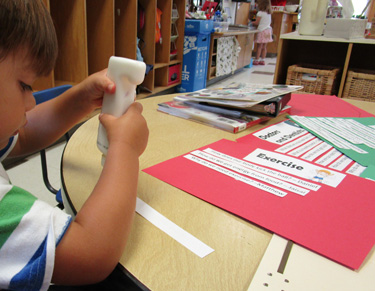
Last week we found out what the children already knew about healthy bodies. This week we asked them what they wanted to know. A long list of questions were generated and later sorted into categories of, nutrition, exercise, doctors/dentists, and how the body works. Click on the image below to read the questions.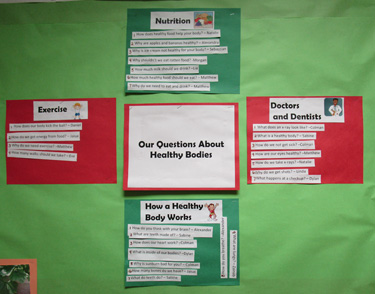
Hand Washing Expert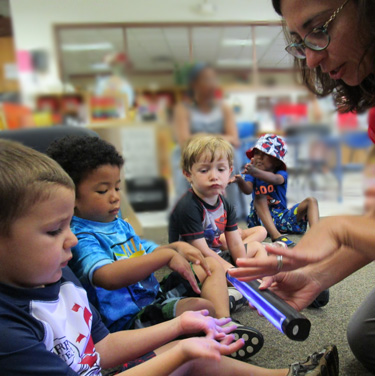
Dr Shirley Micallef, from the AGNR department on campus, came with some interns to do a "hands on" experiment that showed how germs stick to your hands and are transferred to the food you eat when you touch it. Dr. Micallef applied a day-glow lotion to the children's hands as pretend germs. Using a black light, the "germs" showed up on anything the children touched. After washing their hands to the tune of, "This is the way we wash our hands", the classmates hands appeared "clean" under the black light.
The Farmer's Market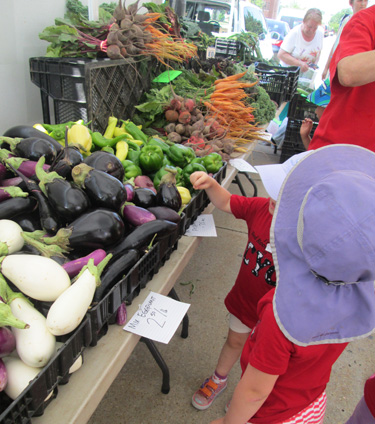
Our field trip for the week was to walk to the UMD Farmer's Market. Each child was given a color to look for in the array of fruits and vegetables at the market. A representation of colors was purchased to take back to camp and consume for snack. Some of the items chosen were: raspberries, tomatoes, carrots, corn, Challah bread, broccoli, blueberries, and purple beans. One vendor gave us a box of goose berries which was a new treat for everyone to try. At the end the children were able to spin a wheel at the UMD Sustainability table, answer a question and win a decal. The Red Room successfully answered, " What is the third R of Reduce and Reuse"? Do you know the answer?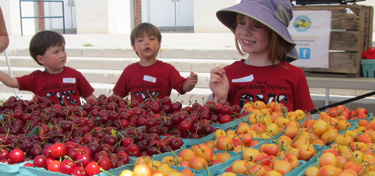
Literacy/Art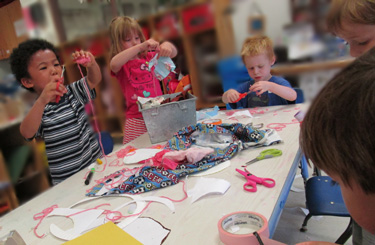
This week's author was Simms Taback. Fabric scraps were added to the art table after reading Taback's Caldecott winning book, Joseph Had a Little Over Coat, an old folk tale about making something from nothing. One girl made clothes for her stuffed animal, another made a mask from some fish material. A boy covered a plastic button with cloth to resemble that from the story. Some children thought it would be fun to sew the fabric.
Body Tracings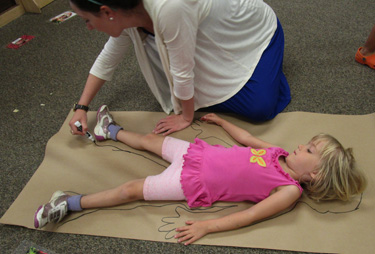
The Red Room began tracing their bodies. This will be a continuous summer art/science project. During the following weeks children will draw, paint, and add collage materials to the tracings. When completed the students will dictate how they keep their bodies healthy and share their completed project with the class.
Music 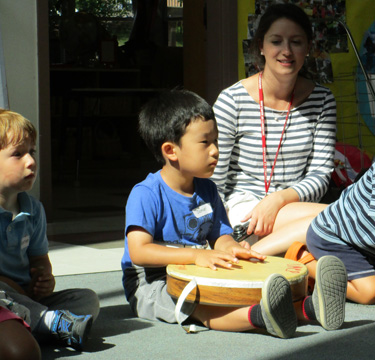
In music class, Ms. Tevelow had the children participate in the story, The 3 Billy Goats Gruff, by playing instruments for each part. The billy goats were played on progressively larger drums and the narrators used bells. She also taught the class a new story song called "Baby Shark", which was everyone's favorite. We were surprised to see Ms. Tevelow at the farmer's market later in the day. She sang songs with us as we all walked back to the CYC together!
Cooking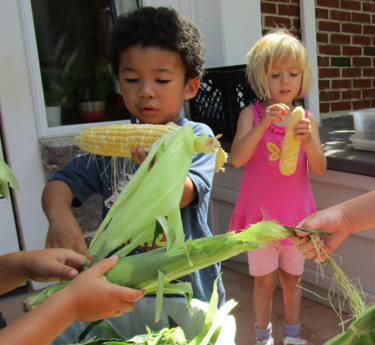
Children helped shuck the corn and snap the beans bought at the farmer's market to get them ready for snack.
Pool Picture of the Week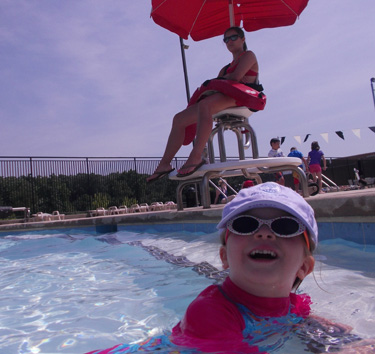
Reading- Identify and name some upper and lower case letters in words, especially those in the student's own name
Camper's names are displayed in several places around the room including their cubbies and meeting spots. When choosing a helper for the day teachers give letter clues that correspond with the child's name. Children either remember or check each other's spots for matches to the clues.
Comprehension of Informational Text- Listen to and read functional documents by following simple oral or rebus directions.
A picture/word schedule is located in the center of the classroom. Children move a clothes pin pointer to the activity/time of day such as meeting time or outside time.
Knowledge of Statistics-Explore data by answering a yes/no question
On occasion campers answer yes or no questions on a survey type chart when entering the classroom. Before going to the farmer's market, children responded to, "Have you been to a farmer's market?". They did this by adding their name to the yes or no side of the chart. Later the chart was discussed and tallied. A number equation was written to verify the total.